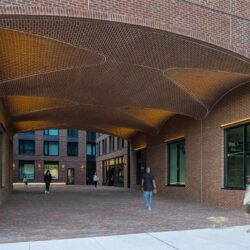
New Treatment For Stroke Reversal At New York Methodist Hospital
Stroke is now the third-leading cause of death and a leadingcause of disability, with almost 800,000 Americans experiencing astroke every year. A stroke-which is actually a brainattack-comes in two forms: ischemic, caused by the blockage of ablood vessel supplying the brain, and hemorrhagic, caused bybleeding into or around the brain.
Eighty-three percent of strokes are ischemic strokes, which occurwhen blood clots or other particles block arteries to the brain andreduce blood flow, depriving the brain cells of oxygen andnutrients. Within minutes, cells may begin to die.Ischemic strokes can be caused by complications from smoking, highcholesterol, diabetes and high blood pressure (hypertension), whichall can lead to the narrowing of arteries in the brain. Hemorrhagicstrokes occur when a blood vessel in the brain leaks or ruptures.Uncontrolled hypertension and weak spots in blood vessel walls(aneurysms) can cause hemorrhages.When a patient with an ischemic stroke is taken to the emergencyroom within three hours of the stroke’s occurrence, a clot-bustingmedication called tPA (tissue plasminogen activator) can beadministered intravenously or directly to the site of the clot.This medication may help to reverse the stroke by breaking up theclot and allowing blood flow to reach the brain again, saving braincells. However, this is not an option if the patient arrives in theemergency room after three hours, nor is it an option forhemorrhagic strokes.Additional options for treatment of stroke are now available at NewYork Methodist Hospital, which recently welcomed Dr. Michael Ayad,a neurosurgeon with a Ph.D. in neurophysiology, as attendingphysician in the division of neurosurgery. Ayad is devoted toresearch in the area of blood flow to the brain.One of the procedures that NYM can now offer is a stroke reversalalternative to tPA, utilizing the Penumbra System, first approvedby the FDA in 2009. This procedure enables the neurosurgeon toremove blood clots through the femoral artery.The Penumbra System is a tiny vacuum cleaner for the brain, whichsuctions out blood clots through a catheter attached to a pump.This procedure can result in a successful reversal of stroke, up toeight hours after its occurrence.Even with the advanced technology we have, stroke reversal isstill dependent on the amount of time the brain cells have beendeprived of oxygen, said Ayad. But in collaboration with thedepartment of neurology, the division of neurosurgery and theemergency department, we will be creating well-informed teams tomobilize quickly, at all hours of the day, potentially savingbrain, and lives.The Merci System, introduced in 2006, is another option beingoffered for removing blood clots from the brain. With the MerciSystem, a catheter is also inserted into the femoral artery, but ithas a corkscrew-shaped device attached to the end, used tophysically spear and remove the blood clot.Ayad is also able to provide care for people with a cerebralarteriovenous malformation (AVM), an abnormal connection betweenarteries and veins in the brain, which can lead to hemorrhage andstroke-like symptoms, such as difficulty speaking, weakness,numbness, vision loss or severe unsteadiness. AVMs can be treatedeither by making an incision into the skull and removing theabnormal veins and arteries comprising the malformation (known asresection), or by using a procedure known as embolization, in whicha catheter blocks the abnormal feeding arteries with a type oftissue glue, reducing blood flow into the abnormality, thussignificantly decreasing chances of brain hemorrhage. A similartechnique using platinum coils is used to treat intracerebralaneurysms.In certain cases, after a stroke or following a hemorrhage, brainswelling can occur, said Ayad. In cases like these, we are alsoequipped to do a decompressive craniectomy, during which a portionof the skull is removed in order to provide room for the brain toswell safely.For more information, call the division of neurosurgery at718-246-8610.Leave a Comment
Leave a Comment


